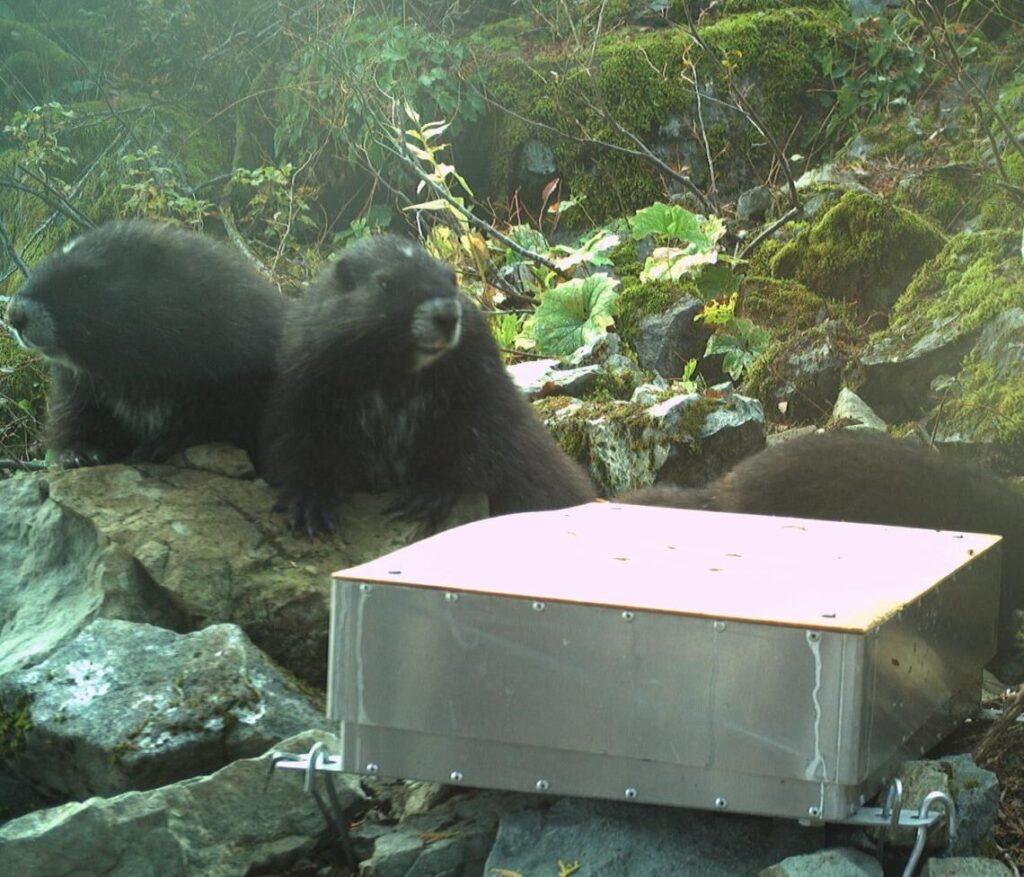Two Vancouver Island University technicians have created a new device they say will help improve the reproductive health of marmots.
Two years in the making, a smart device will help researchers determine if supplemental feeding will help improve the marmot’s condition, which they say has already started to increase to 300 individuals.

According to VIU, engineering technician Devin Ayotte and resource management and protection technician Michael Lester have been working on the tool to help researchers investigate how body weight affects the hibernation patterns and the number of marmot pups in the spring.
Lester says understanding hibernation patterns is critical to the marmot population, and so far they’re starting to understand how diet plays a part in their reproduction. But there is still much to learn.
“One of the things we don’t know is how much body condition affects reproduction,” he says. “The average number of pups a female has in a litter might be three per year, but she might have four or five is she’s in optimal condition.”
Part of the research is understanding how the supplemental food source is beneficial to helping them achieve ‘optimal condition’ and with the help of the Marmot Recovery Foundation they’re starting to build the link and how it aids in survival.
Lester says access to food sources seems to be the key.
“We put the biscuits in a tube adjacent to the hibernaculum, their winter shelter, so when the marmots emerge they have access to nutritious food,” he says. “This can be scarce for several reasons.”
The units are expected to be deployed in areas where there are supplemental feeding tubes and where there aren’t any.
For the full report visit VIU’s website.






